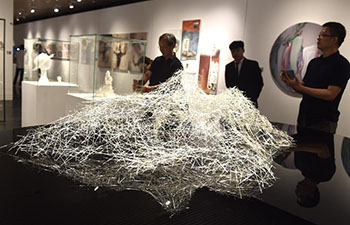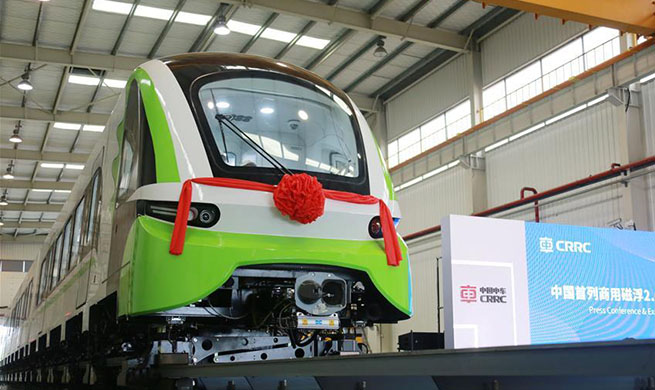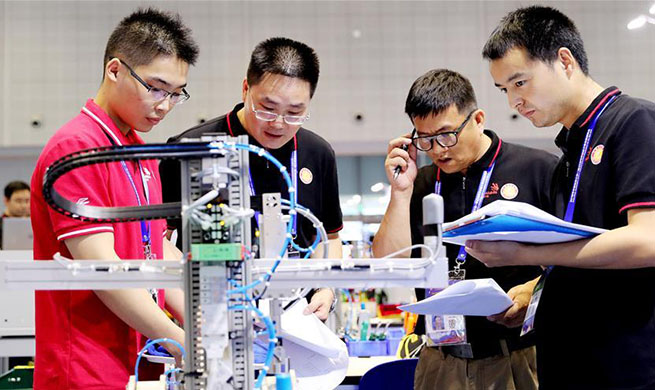WASHINGTON, June 13 (Xinhua) -- Engineers at Massachusetts Institute of Technology (MIT) have created soft, 3D-printed structures whose movements can be controlled with a wave of a magnet, like marionettes without the strings.
A study published on Wednesday in the journal Nature showed that the magnetically manipulated structures were composed of a smooth ring that could wrinkle up, a long tube that could squeezed shut, a sheet that could fold itself, and a spider-like "grabber" that could crawl, roll, jump, and snap together fast enough to catch a passing ball.
It can even be directed to wrap itself around a small pill and carry it across a table, according to the study.
The researchers fabricated each structure from a new type of 3-D-printable ink that they infused with tiny magnetic particles.
They fitted an electromagnet around the nozzle of a 3-D printer, which caused the magnetic particles to swing into a single orientation as the ink was fed through the nozzle.
By controlling the magnetic orientation of individual sections in the structure, the researchers can produce structures and devices that can almost instantaneously shift into intricate formations, and even move about, as the various sections respond to an external magnetic field.
Zhao Xuanhe, professor in MIT's Department of Mechanical Engineering said the group's technique may be used to fabricate magnetically controlled biomedical devices.
"For example, we could put a structure around a blood vessel to control the pumping of blood, or use a magnet to guide a device through the GI tract to take images, extract tissue samples, clear a blockage, or deliver certain drugs to a specific location. You can design, simulate, and then just print to achieve various functions," said Zhao.
SMART MAGNETIC PARTICLES
Instead of making structures with magnetic particles of the same, uniform orientation, the team arranged individual sections with a distinct orientation of magnetic particles.
When exposed to an external magnetic field, each section should move in a distinct way, depending on the direction its particles move in response to the magnetic field.
According to the study, the researchers can print sections of a structure and tune the orientation of magnetic particles in a particular section by changing the direction of the electromagnet encircling the printer's nozzle during printing.
The team also developed a physical model that predicts how a printed structure will deform under a magnetic field.
"We have developed a printing platform and a predictive model for others to use. People can design their own structures and domain patterns, validate them with the model, and print them to actuate various functions," said Zhao.

















